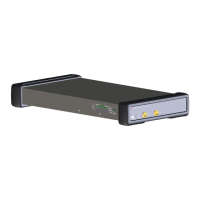24 Keysight N778xC Series Polarization Instruments User’s Guide
2 Getting Started
N778xC Series Polarization Instruments
The Keysight N778xC polarization test products enable high-speed, high
performance characterization and verification of optical components and
sub-systems.
N7781C Polarization Analyzer
The Keysight N7781C is a compact high-speed polarization analyzer that
provides comprehensive capabilities for analyzing polarization properties
of optical signals. This includes representation of the state of polarization
(SOP) on the Poincaré sphere (Stokes parameter). The on-board
algorithms together with the on-board calibration data ensure highly
accurate operation across a broad wavelength range.
Due to its real time measurement capability of 1 M samples/s, the
instrument is well suited for analyzing disturbed and fluctuating signals as
well as for control applications requiring real time feedback of polarization
information, for example in digital control loops in automated
manufacturing test systems.
The built-in user interface allows a comprehensive analysis of the obtained
measurement data and replaces the Polarization Navigator software that
was required with the N7781B, the predecessor of N7781C. Programming
uses a new SCPI command set and the instrument is addressed as a VISA
resource.
The instrument comes in a compact form factor of just one rack height
unit, with LAN and USB interfaces.
For further details on its application and key features, refer to the product
datasheet available on www.keysight.com.
N7785C Synchronous Scrambler
The Keysight Technologies N7785C is a high-speed synchronous
scrambler that can repeatably switch through a series of states of
polarization (SOP) with both input and output triggering functions. This
unit can operate in various modes:
• As a synchronous scrambler, the device switches the SOP of the output
signal in a random but repeatable pattern. Switching of the SOP occurs
within a few microseconds. The SOP is stable for a predefined time until
it again switches to a new SOP. An electrical trigger input can be used
to synchronize the scrambler with external events.

